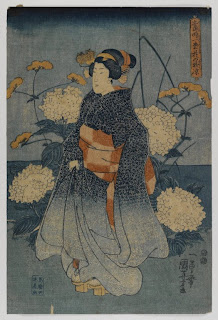LIHU‘E — Matsuri translates to mean festivals, and during the Kanyaku Imin, or 100th anniversary of the arrival of the first Japanese immigrants to Hawai‘i, the Matsuri Kaua‘i was born.
“Last year, we didn’t have a Matsuri because of the earthquake and tsunami in Japan,” Kaua‘i Film Commissioner Art Umezu said. “This year, the Japanese people vowed to return and the Matsuri, the 27th, was again held.”
Saturday, a steady throng of people flowed through the Kaua‘i War Memorial Convention Hall, hosted by the Kaua‘i Japanese Cultural Society, eager to experience the Japanese culture, including the familiar bento, Japanese dance, crafts, and this year, a newly-introduced Kendama skill contest.
The Kanyaku Imin was celebrated in 1985 and the Matsuri seed was nurtured by a group of dancers and karaoke singers to perpetuate the Japanese culture and strengthen Kaua‘i’s bond with the people of Japan, states a mayoral proclamation celebrating the Matsuri Kaua‘i 2012.
Mayor Kazuhiro Miyamoto of Moriyama City arrived with a dozen visitors, stopping to enjoy the ‘ukulele classes with the Lihu‘e Senior Center before joining Tsugio Kawashima in a tree planting ceremony at Kaua‘i High School to reinforce and solidify the Rotary Exchange Student program started by Kawashima who was one of the first people to call and offer help to Kaua‘i following the destruction of Hurricane ‘Iniki in 1992.
These sister city relationships between the County of Kaua‘i and Japan are also part of the Matsuri celebration, Mayor Miyamoto, enjoying his first trip to Hawai‘i and Kaua‘i, offering his greetings to Matsuri guests followed by a program of song and dance by its visitors.
The County of Kaua‘i currently enjoys sister city relationships between the City of Oshima-Gun, Yamaguchi Prefecture, the City of Ishigaki, Yaeyama Gunto, Ryukyu Islands, the City of Moriyama, Shiga, and the City of Iwaki, Fukushima Prefecture.
In addition to the presentations of karaoka, dance, martial arts, taiko drumming, kimono kitsuke for adults and children, chado, or tea ceremony, origami, oshibana, mochi pounding, bonsai demonstrations, and a mini bon dance, two films were offered for free.
“Dale Rosenfeld just saw one of the films and was almost moved to tears,” said Sue Kanoho, executive director of the Kaua‘i Visitors Bureau.
Joyce Takahashi expressed a similar sentiment, referring to “Can You See Our Lights,” a chronicle of the efforts by residents of three northern Tohoku towns, Rikuzentaka, Soma and Minami Soma, as they repaired and rebuilt their lives following the earthquake and tsunami which struck Japan last year.
Despite the challenges the people faced, the townspeople banded together and continue to host their annual summer Obon festivals to honor the souls of the departed.
“Fukushima Hula Girls” follows a troupe of hula dancers from the Spa Resort Hawaiians, a large, Hawaiian-themed park in Iwaki City, as the dancers travel to the devastated areas in Japan, providing encouragement, joy and smiles.
Both films were offered at no charge to Matsuri Kaua‘i guests through the Kaua‘i Film Commission, the Office of Economic Development, and the Honolulu Japanese Consulate.
Matsuri Kaua‘i 2012 is brought to the people of Kaua‘i through the Kaua‘i Japanese Cultural Society, the county’s Office of Economic Development, the Hawai‘i Tourism Authority and the County of Kaua‘i to showcase the island’s different groups’ talents and to perpetuate the Japanese culture.









